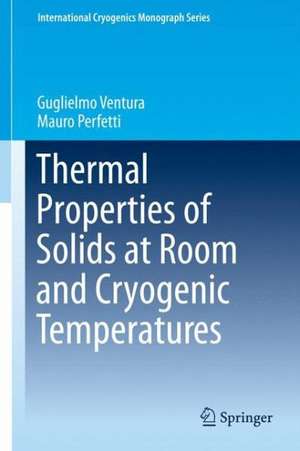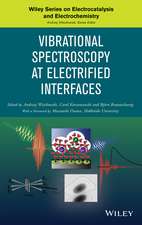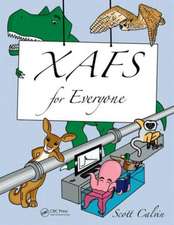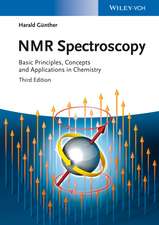Thermal Properties of Solids at Room and Cryogenic Temperatures: International Cryogenics Monograph Series
Autor Guglielmo Ventura, Mauro Perfettien Limba Engleză Hardback – 10 iul 2014
Hence the properties of materials must be accurately known also at cryogenic temperatures.
This book provides a guide for engineers, physicists, chemists, technicians who wish to approach the field of low-temperature material properties. The focus is on the thermal properties and a large spectrum of experimental cases is reported. The book presents updated tables of low-temperature data on materials and a thorough bibliography supplements any further research.
Key Features include:
° Detailed technical description of experiments
° Description of the newest cryogenic apparatus
° Offers data on cryogenic properties of the latest new materials
° Current reference review
| Toate formatele și edițiile | Preț | Express |
|---|---|---|
| Paperback (1) | 637.13 lei 43-57 zile | |
| SPRINGER NETHERLANDS – 23 aug 2016 | 637.13 lei 43-57 zile | |
| Hardback (1) | 643.34 lei 43-57 zile | |
| SPRINGER NETHERLANDS – 10 iul 2014 | 643.34 lei 43-57 zile |
Din seria International Cryogenics Monograph Series
- 18%
 Preț: 948.29 lei
Preț: 948.29 lei - 18%
 Preț: 952.57 lei
Preț: 952.57 lei - 18%
 Preț: 1662.85 lei
Preț: 1662.85 lei - 18%
 Preț: 1225.94 lei
Preț: 1225.94 lei - 18%
 Preț: 948.61 lei
Preț: 948.61 lei - 18%
 Preț: 1842.79 lei
Preț: 1842.79 lei - 18%
 Preț: 942.77 lei
Preț: 942.77 lei - 24%
 Preț: 1081.74 lei
Preț: 1081.74 lei - 24%
 Preț: 1160.87 lei
Preț: 1160.87 lei - 18%
 Preț: 962.49 lei
Preț: 962.49 lei - 18%
 Preț: 1070.60 lei
Preț: 1070.60 lei -
 Preț: 394.87 lei
Preț: 394.87 lei - 18%
 Preț: 1218.21 lei
Preț: 1218.21 lei - 24%
 Preț: 952.90 lei
Preț: 952.90 lei - 24%
 Preț: 727.79 lei
Preț: 727.79 lei - 18%
 Preț: 945.79 lei
Preț: 945.79 lei - 18%
 Preț: 1111.67 lei
Preț: 1111.67 lei - 23%
 Preț: 832.28 lei
Preț: 832.28 lei - 18%
 Preț: 747.38 lei
Preț: 747.38 lei
Preț: 643.34 lei
Preț vechi: 756.86 lei
-15% Nou
Puncte Express: 965
Preț estimativ în valută:
123.12€ • 128.06$ • 101.64£
123.12€ • 128.06$ • 101.64£
Carte tipărită la comandă
Livrare economică 14-28 aprilie
Preluare comenzi: 021 569.72.76
Specificații
ISBN-13: 9789401789684
ISBN-10: 9401789681
Pagini: 228
Ilustrații: XI, 216 p. 104 illus., 3 illus. in color.
Dimensiuni: 155 x 235 x 18 mm
Greutate: 0.5 kg
Ediția:2014
Editura: SPRINGER NETHERLANDS
Colecția Springer
Seria International Cryogenics Monograph Series
Locul publicării:Dordrecht, Netherlands
ISBN-10: 9401789681
Pagini: 228
Ilustrații: XI, 216 p. 104 illus., 3 illus. in color.
Dimensiuni: 155 x 235 x 18 mm
Greutate: 0.5 kg
Ediția:2014
Editura: SPRINGER NETHERLANDS
Colecția Springer
Seria International Cryogenics Monograph Series
Locul publicării:Dordrecht, Netherlands
Public țintă
ResearchCuprins
Preface.- Dedication.- Part I.- 1 Heat Capacity.- 2 How to Measure Heat Capacity at Low Temperatures.- 3 Data of Specific Heat.- Part II.- 4 Thermal Expansion.- 5 How to Measure Thermal Expansion Coefficient at Low Temperatures.- 6 Data of Thermal Expansion.- Part III.- 7 Electrical and Thermal conductivity.- 8 How to Measure Thermal Conductivity.- 10 Data of Thermal Conductivity.
Notă biografică
Guglielmo Ventura was professor of Cryogenics and Vacuum Technologies at the University of Florence until he retired in 2013. He is now a cryogenic consultant for INFN, Rome, in the European project LUCIFER. He has collaborated in space, rocket and balloon born experiments (measurement of the Cosmic Background Radiation or CBR) and is now involved in CUORE (Cryogenic Underground Observatory for Rare Events) underground experiments.
Mauro Perfetti was born in 1988 in La Spezia (Italy). After his graduation with first class of honors in 2007, he obtained his bachelor’s degree in 2010 and his master’s degree in 2012 in Chemistry, both Summa com Laude. In 2012 he won a position as PhD student in Chemical Sciences in the University of Florence with the supervision of Professor Roberta Sessoli. Despite his young age, he is co-author of many papers published by prestigious journals. His research line, inserted in the field of Molecular Magnetism, is mainly focused on the understanding of the low temperature magnetic behaviour of anisotropic lanthanide-based Single Molecule Magnets and on the electrical and magnetic characterization of new hybrid materials composed by Single Molecule Magnets grafted on Nanoparticles.
Mauro Perfetti was born in 1988 in La Spezia (Italy). After his graduation with first class of honors in 2007, he obtained his bachelor’s degree in 2010 and his master’s degree in 2012 in Chemistry, both Summa com Laude. In 2012 he won a position as PhD student in Chemical Sciences in the University of Florence with the supervision of Professor Roberta Sessoli. Despite his young age, he is co-author of many papers published by prestigious journals. His research line, inserted in the field of Molecular Magnetism, is mainly focused on the understanding of the low temperature magnetic behaviour of anisotropic lanthanide-based Single Molecule Magnets and on the electrical and magnetic characterization of new hybrid materials composed by Single Molecule Magnets grafted on Nanoparticles.
Textul de pe ultima copertă
This book is a guide for materials scientists, physicists, chemists and engineers who wish to explore the field of low-temperature material properties. The focus is on heat capacity, thermal expansion and electrical and thermal conductivity. The authors report a wide range of experimental details and data, and have compiled useful tables of low-temperature data.
Each chapter of the book starts by addressing the theoretical basis of the phenomena. This is a concise presentation, but it helps the reader to develop a deeper understanding of the experiments. The second part of the chapters is dedicated to describing the main experimental techniques to measure thermal properties at low and very low temperature ranges. The final part of each chapter provides a wealth of relevant experimental data in the form of tables and graphs.
Each chapter of the book starts by addressing the theoretical basis of the phenomena. This is a concise presentation, but it helps the reader to develop a deeper understanding of the experiments. The second part of the chapters is dedicated to describing the main experimental techniques to measure thermal properties at low and very low temperature ranges. The final part of each chapter provides a wealth of relevant experimental data in the form of tables and graphs.
Caracteristici
Explains the refrigeration principles and describes how cryogenic devices work Highlights the utility of cryogenic data in industrial and scientific applications Offers data on the cryogenic properties of the latest new materials Provides detailed descriptions of cryogenic experiments Includes supplementary material: sn.pub/extras








